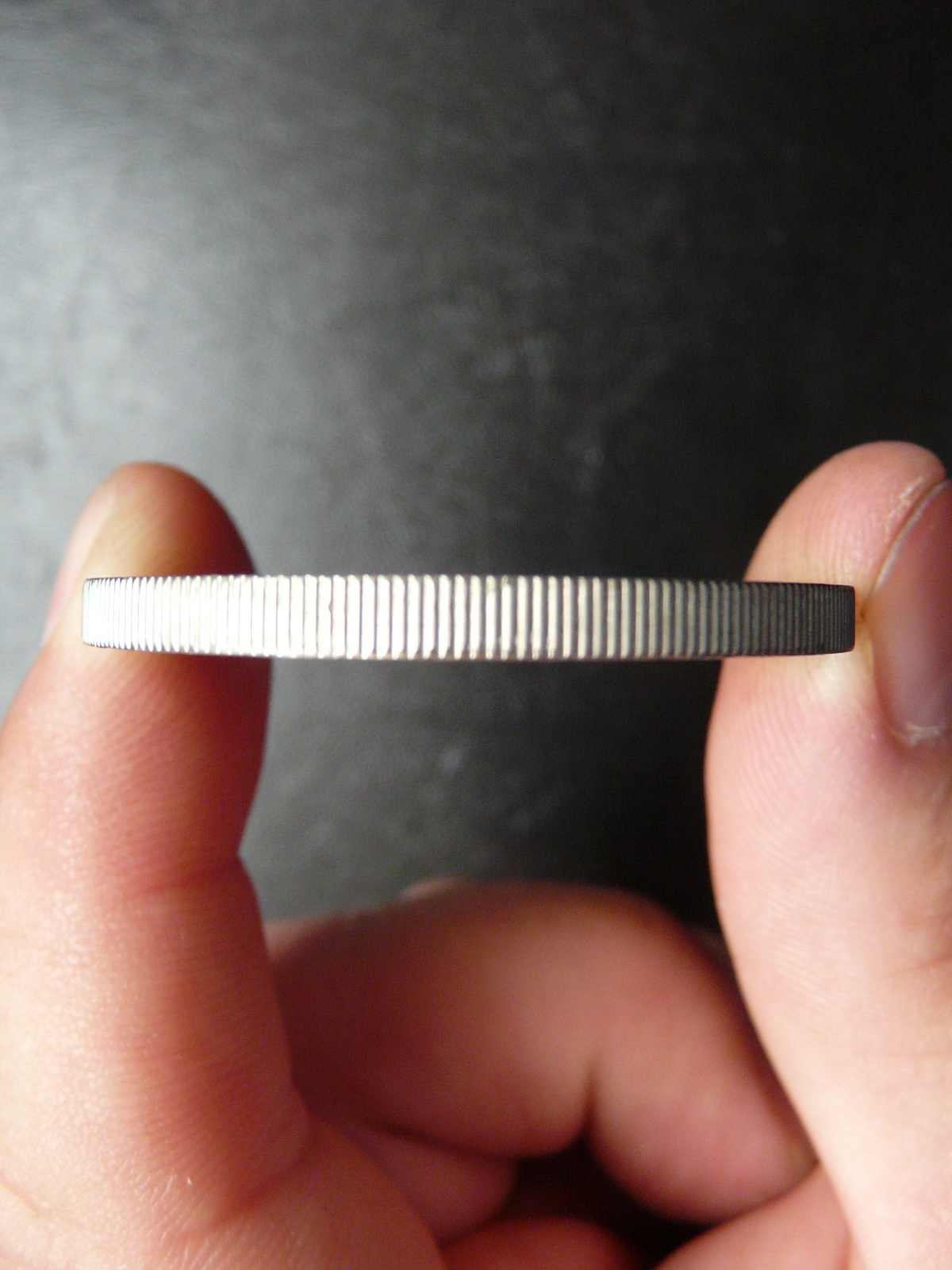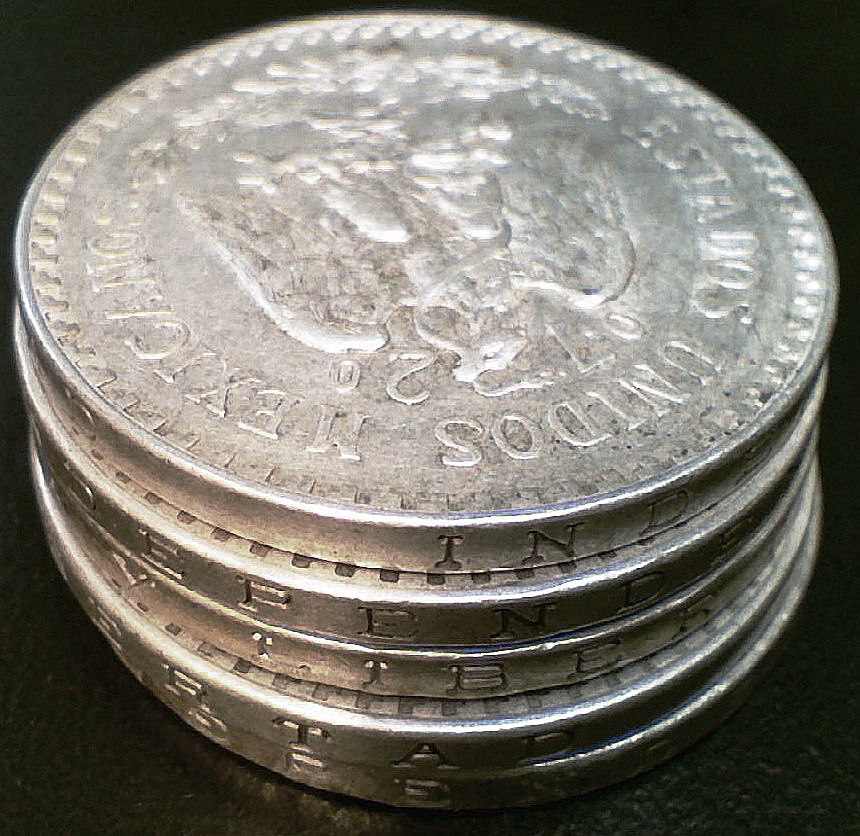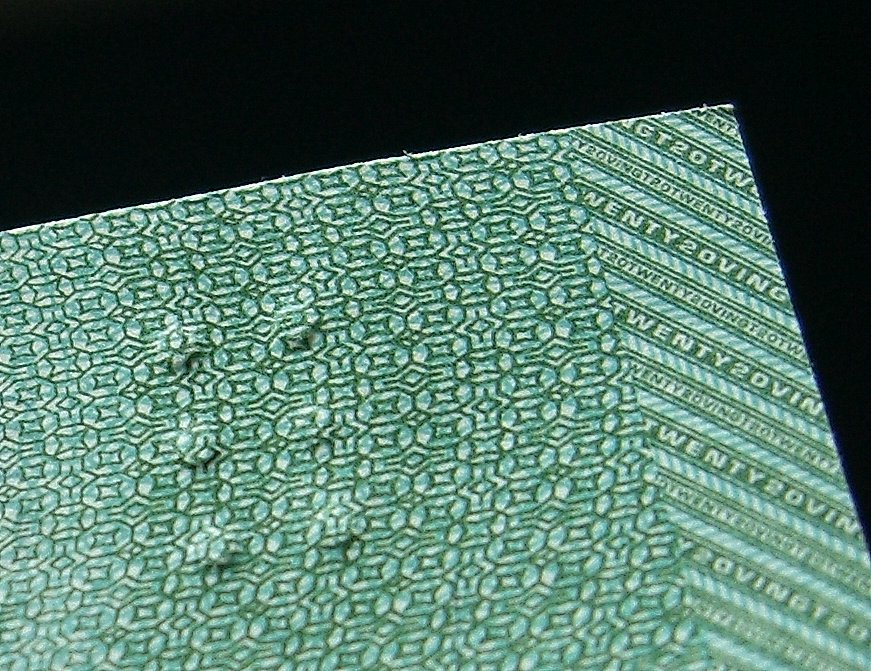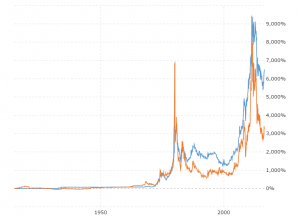Why Do Some Coins Have Ridges (Reeds) On The Edge?
If you look at early gold and silver coins you’ll notice that a great deal of them have a smooth rim – or at least a rim without any ridges (technically called “reeds”). This is most often found in very old coins that come from an era when minting practicing weren’t as refined as they are today. In America, the practice of having a reeded edge on coins got its start in the 1700’s. Back then (before we had fiat money – opposite of the gold standard), gold and silver coins were actually made of real gold and silver. For example, a $20 gold coin contained $20 dollars of actual gold and a quarter contained 25 cents worth of real silver.
Because coins were made of valuable metal, people began to shave off bits of gold from the edge of a gold coin. For example, a $20 dollar gold coin now contained around $19.50 of actual gold. If the person was careful enough, the shaving would be unnoticeable and that $20 dollar gold coin could still be exchanged as usual. Over time, a person could save up enough gold or silver shavings to sell those as scrap metal and reap a profit, thus making the shaving effort worth it in the end.
The government began to counteract the criminals by getting rid of smooth-edged coins. The first step was including designs into the edge of coins. If you notice early gold double-eagles and bust dollars, they have stars, patterns and some lettering minted into the edge of the coins. Although this warded off some scammers, people were still persistent and could shave metal off in between the stars and patterns. To end this once and for all, the government created the ridges on the edge of the coin in what we now know as “reeding.” With the addition of the reeding, it was almost near impossible to shave off metal without it being noticeable. Smaller denomination coins such as nickels and pennies were exempt because it was determined that they weren’t valuable enough for the shaving to be worth the effort.
In 1964, the United States stopped making coins out of 90% silver, and in 1969 they stopped using silver altogether. So why do coins continue to have reeds if shaving off precious metal is no longer an issue?
There’s a widely held theory/rumor that the cost to modify the minting machinery outweighs the necessity of removing the reeds. And while that makes some sense, the current stated reason is to assist the visually impaired. The difference between a dime and a penny, which are similar in size is that one is reeded and one isn’t. Unfortunately, this isn’t the case with American paper money. Blind people still struggle because all of our money is the same size and weight with no distinguishable characteristics. Blind people are forced to create their own systems to decipher which bills are which such as folding bills a certain way, or using a braille stamper. Other countries have paper bills that are different sizes so they’re more easily distinguishable. There have been whispers of the government working on a solution for this by adopting the Canadian system of imprinting Braille onto the bills.













Ive wondered, as I collect foreign as well as domestic minted money. Thanks for the insight on American money.
I have read in the past that the reeding was to counter act counterfeiting mostly and not to wart off the shaving. I guess people will do many things to get a “step ahead”.
Thanks for the information.
TVP